Engaging Ways to Teach with Dry Erase Painted Walls
Dry erase painted walls are ideal writing and drawing surfaces to use in classroom instruction because they’re large, open, expansive, inviting, and easy to write on and erase. Both teachers and students will be drawn to use dry erase walls during lessons that require a lot of visual stimulation and group interaction. Here are some engaging and creative ways to employ dry erase surfaces in either the home school setting or the traditional classroom.
Present Class Material Visually and with Ease
A dry erase wall helps students to focus their attention on language arts lessons more closely by allowing teachers to present new words, show how sentences are formed, and explain correct spelling, punctuation, and grammar in large letters and diagrams. To draw attention to essential features of a lesson’s content, you may underline and use strategically placed arrows and numbers along with your written text. You can also use dry erase markers with different colored inks to highlight important parts of lesson material, and create sentence patterns and/or substitution tables to teach correct grammatical forms and syntactic structures.
Sentence Patterns
A sentence pattern is a formula that presents the units that make up a grammatically correct sentence. For instance, the formula S x Vb. x D.O. means Subject x Verb x Direct Object and is represented by sentences such as the following:
The cat chased the mouse.
Who deposited the money?
Teaching students about the various sentence patterns in English and how to use them to produce smoothly flowing writing that leaves a positive impression on an audience is especially important at the middle and high school levels.
Substitution Tables
Creating a substitution table involves making columns that contain grammatical units (words and phrases) that may be combined to form sentences. From a table that includes five or six columns and an equal number of horizontal lines, hundreds of different sentences may be generated. The sentences created may all be grammatically possible, though they might not all make sense when read.
Sentence patterns can be useful guides for language arts students. However, unless the students have reached the stage in their learning process where they’re familiar with grammatical terms, substitution tables are probably more useful tools to use in teaching proper sentence structure. Students can use these tables in many ways. By constructing large numbers of sentences from substitution tables (ten or more), learners will become fluent in common English speech conventions. They will also find the tables helpful in understanding correct syntax so that they can become skillful in using words and phrases to write well-formed sentences.
Substitution tables may vary in their degree of complexity based on students’ grade level. But whatever grade your students are in, you can use the tables to great effect on the large open surface of your dry erase wall. For example, after creating several substitution tables with columns containing words and phrases appropriate to their current knowledge, you can have the students work together in small groups to generate as many grammatically correct sentences as possible.
The idea behind substitution tables is that students are asked to choose one option from each column in a table – from left to right – so as to generate a significant number of sentences. In order for students to get the most benefit from this exercise, tables allowing them to write ten or more sentences will be more effective and fit for the lesson’s purpose than those that lead to creating only three or four sentences. Writing a large number of sentences from a given set of words and phrases will be easy to do on the vast canvas of your dry erase wall. In this way, your students can enhance their grasp of the English language and improve their writing skills to help ensure their current and future academic success.
Write to Effectively Convey Your Lesson Material
Make sure to write clearly and in large enough letters for students in the back of the classroom to see. Also, as you talk and explain lesson content, always write in straight lines and stand in a position that does not block what’s being written from the students’ line of vision. The large size of your dry erase wall will allow you to produce much larger text than would be possible on the limited surface of a traditional whiteboard and to stand in a way that does not limit students’ view of what you’re writing. So, take advantage of this feature, even if you’re in the habit of writing on the narrower confines of a conventional dry erase board.
Use Tables, Charts, and Diagrams to Help Explain Concepts and Structures
Produce tables and charts in advance of lessons and create simple diagrams on your dry erase wall to increase students’ interest level and focus on the content. Space the amount of content. Avoid cluttering up your dry erase wall with too much text or too many diagrams in one area. Charts and tables help to keep information organized. Charts and diagrams are especially helpful, as they enable students to see ideas and information laid out visually in an orderly way.
Also, such visual aids can help students to process content and make connections among various parts of a lesson more easily than if they just read the material in a textbook. You can purchase or make charts to display around your classroom and also create charts and diagrams on your dry erase painted wall as regular parts of your daily lessons. These tools are especially appropriate for use at the elementary school level, where children are likely to have shorter attention spans and need visual prompts to help them remain focused.
Creating charts on your dry erase wall for use during lessons will help to engage your students more deeply in their classroom learning. A large proportion of students are visual learners, so they grasp and remember information better when it’s associated with diagrams or illustrations. If you’re teaching a lesson on spider anatomy, for instance, you can draw a large image of a spider on your dry erase wall. Then label the spider’s body parts with dry erase markers of different colors to make the graphic more visually interesting while the students observe. When drawing a chart or diagram on the wall in front of your class, be sure to pause and ask questions or invite the students to help you complete the visual as you continue giving information.
Let Students Erase the Dry Erase Wall when Needed
Give students sufficient time to write notes on your lesson material and avoid erasing the board too quickly. Also, it’s a good idea to assign whiteboard monitors equipped with clean microfiber cloths to help with the job of erasing after all of the students have taken their notes. Kids love to erase dry erase walls, so they’ll undoubtedly do this job with enthusiasm. Having them assist you in this way also helps to instill the importance and benefits of lending a hand to others and of dealing with personal responsibility.
Monitor and Evaluate the Material You Present in Each Lesson
When teaching a lesson, make sure that what you write on your dry erase wall is easy enough to understand and is organized in such a way that helps your students follow your train of thought and thus keep up with the flow of the lesson. Doing so can ensure that the material you present on your dry erase wall is always meaningful and appropriate for students´ level of understanding. The large surface area and easy erasability of a dry erase painted wall make it easy for you to step back, scan your work, judge its content, and make any changes that you feel are necessary to enhance comprehensibility as a lesson goes on.
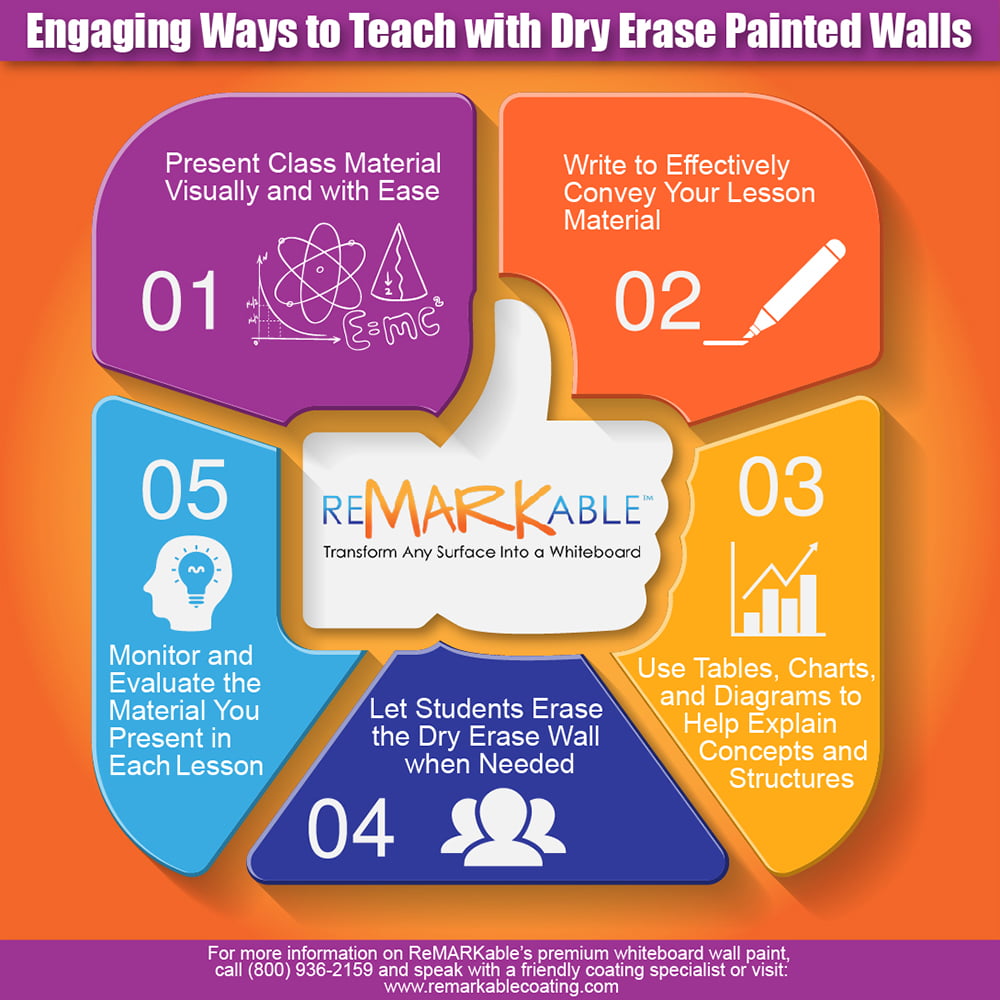

























































































![ReMARKable’s Winter Sale is Here! [25% Off + Free Shipping]](https://www.remarkablecoating.com/wp-content/uploads/2018/01/Red-Tag-Winter-Fashion-Facebook-Post-1-440x264.png)















![Drive Your Organization Into Openness and Watch it Expand [20% Off Whiteboard Paint]](https://www.remarkablecoating.com/wp-content/uploads/2016/04/Drive-Your-Organization-Into-Openness-and-Watch-It-Expand.-1-440x264.jpg)

![30% Off St Patrick’s Day Sale! [Details Inside]](https://www.remarkablecoating.com/wp-content/uploads/2016/03/Glorious-1-440x264.png)


![Giant Leaps Forward Require Big Spaces. [Leap Year Sale Event!]](https://www.remarkablecoating.com/wp-content/uploads/2016/02/Giant-Leaps-ForwardRequire-Big-Spaces-440x264.jpg)

















![ReMARKable Summer Sale 2018 [28% Off Whiteboard Paint]](https://www.remarkablecoating.com/wp-content/uploads/2018/06/Blue-Simple-Line-Beach-Facebook-Post-1-440x264.png)







































































































































































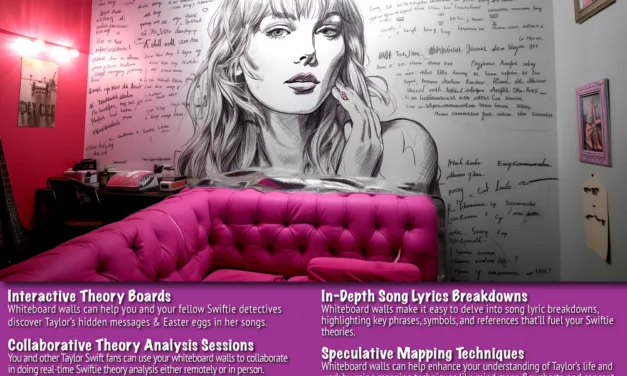


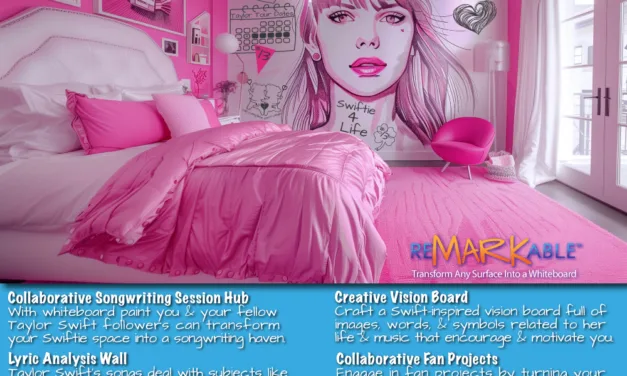
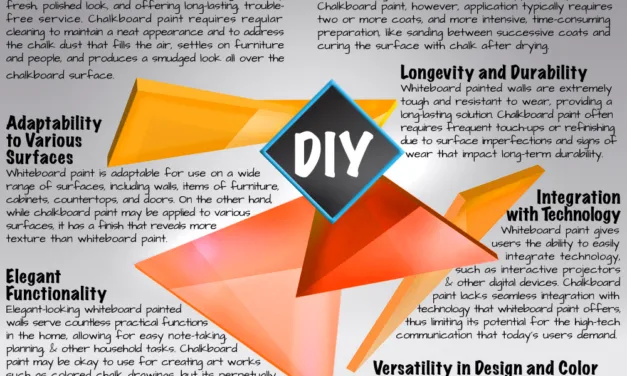
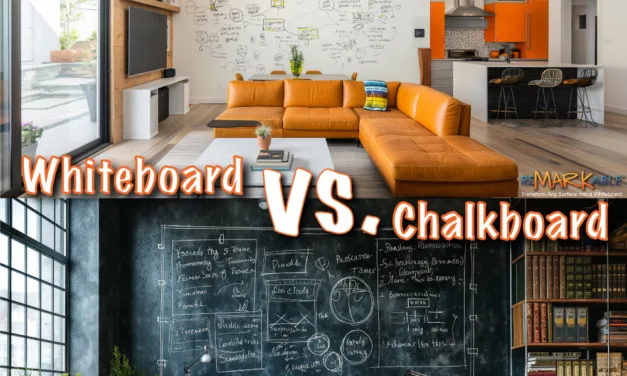








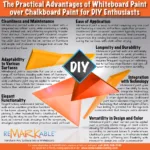
0 Comments